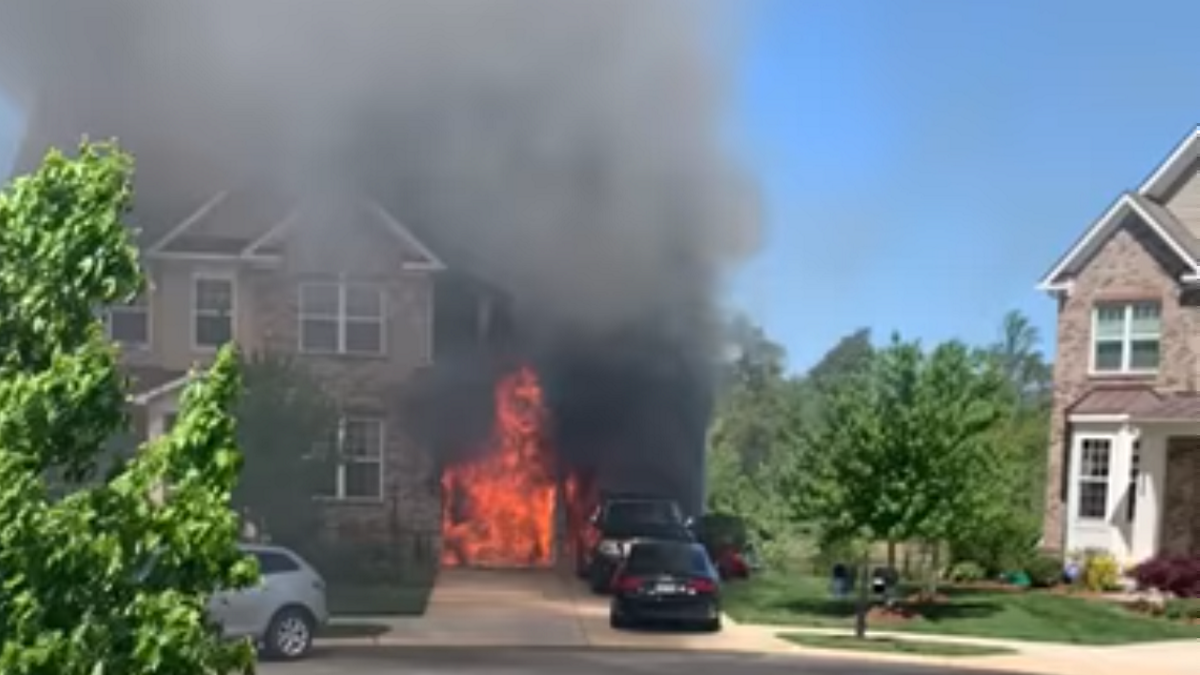Chevy Bolts with Korean Made Batteries Catch Fire Much More Than Gas Cars
With two more Bolt fires just 1 day apart, Two on the same day, and one a few weeks later, just how likely is the Bolt to catch fire than a similar gas vehicle? We keep hearing people say that gas vehicles still catch fire far more often, but is that true?
In 2018 there were an estimated 279 million vehicles in the US, 35% of which are cars. That means there are about 98 million cars. Between 2013 to 2017 there were an average of 117,400 car fires per year in the US (i.e. excluding large trucks and busses). That’s about 120 fires per 100,000 vehicles.
With the 2017-2019 Bolt at 15 fires with 68,000 vehicles, that’s only 22 per 100,000. So that’s way better than a gas car, right?
Probably not. The devil is in the details.
The problem is that we aren’t taking into consideration the age of the vehicle, or what was happening at the time. Also, the Bolts are still catching fire. Older gas vehicles are far more likely to catch fire than new gas vehicles (I don’t think there’s enough data to determine for electric, but I suspect it’s opposite). Gas vehicles are more likely to catch fire when they are running than parked and off. So we need to consider not only the age of the vehicle, but also what it’s doing at the time.
The situation that we are concerned with is the Bolt catching fire while parked in our driveway. So let’s dig into the car fires and find out the details to compare to that.
Of all fires, it’s reported that 37% occurred on “residential street, road or driveway” and “vehicle parking area”. That’s not enough to definitively state “parked”, as there will be more captured there than when just parked (they could be driving). There are probably also parked fires not accounted in that, but let’s use that number as a ballpark. That means 43,400 fires per year while “parked”.
Of those, 68% are due to mechanical or electrical failure (the rest have causes unrelated to the car), or 29,500. Of those, only 5% are vehicles less than 3 years old, so ~1,500 total. There are about 17 million vehicles sold per year (2017-2019), so that means 51 million vehicles 3 years of age or newer.
So 1,500 fires out of 51,000,000 cars is ~3 per 100,000 cars. In other words, at 22 per 100,000, overall the Bolt is already roughly seven times as likely to catch fire while parked in your driveway than a similarly aged gas car.
But it gets even worse – at least for the 2019 model year.
Looking at the fires, in 2020 there were five fires of the 2019 Bolt in a little more than 4 months. At least five more have occurred in 2021. According to GM, only 14,371 2019 Bolts were made with batteries manufactured in Korea, and one US produced batteries have caught fire.
Looking specifically at the 2019 Bolt with a Korean produced battery, that’s 70 fires per 100,000 that occurred over 13 months.
But only about 2.5% of all car fires are a less than two years old – so that’s around 2.2 per 100,000. That makes this model a whopping (roughly) THIRTY FIVE times as likely to catch fire than a 2019 gas car. It is worth noting that with these small numbers, the confidence interval will be large, so it’s hard to get an accurate number. Having said that, it’s fair to say that it is at least an order of magnitude more – and that is extremely worrying.
Note that we believe none of the Bolts that caught fire were previously damaged. GM did investigate, and some fires due to damage were not included in the 8 confirmed battery related fires. We don’t know if any of the gas cars had any previous damage, but surely some did, which would lower their incidence rate.


It took me a while to understand the meaning of this passage: “Note that we believe none of the Bolts that caught fire were damaged. There were some fires not included in the 10 that were ruled due to damage. We don’t know if any of those gas cars had any damage, but surely some did.” It sounds as if the fire caused no damage.
I think what you mean might be this: “None of the Bolts that caught fire had been previously damaged”? “some of fires not included in the 10 were caused by existing damage”?
Ahh, thank you for pointing that out. I added the word “previously”.
None of the Bolts were believed to be previously damaged – as in it wasn’t damage to the Bolt that caused the fire. Whereas surely some of the gas car fires were due to previous damage which caused or contributed to the fire.
The article says “Older vehicles are far more likely to catch fire than new vehicles. They’re also more likely to catch fire when being driven than parked.”
Do you refer here to older Bolts catching fire while driven or just older vehicles in general? This passage is a little confusing.
Older gas vehicles – I will clarify. Thanks!
Why is it so important to make the stats for parked cars vs driving, does it mean its not a big deal if an ICE car catch in fire when you are in it ?
Thanks for your work on this, Sean. It is helpful.
As I am sure you are aware, there is substantial comparative speculation here.
For example, you write ==>
“Older gas vehicles are far more likely to catch fire than new gas vehicles (I don’t think there’s enough data to determine for electric, but I suspect it’s opposite). Gas vehicles are more likely to catch fire when they are running than parked and off. So we need to consider not only the age of the vehicle, but also what it’s doing at the time.”
1. What is meant by “older” here? How old?
2. No hard data is provided to back up this reasonable assumption, which is likely true.
3. What are the hard numbers on gas cars catching fire while running not running? Across what historical time period are these numbers drawn?
4. Seems to me that while these comparisons are important, since we don’t have hard comparative data to really allow us to do anything other than speculate, a more instructive comparison, a fairer one, might be to take instances of ICE fire danger recalls of vehicles that were built five years, or less, after the recall was issued and take a deep dive into how many of those vehicles caught fire, what the circumstances were, etc. There are quite a few of these recalls
https://www.caranddriver.com/news/a35782883/kia-cadenza-sportage-recall-fire-risk/
https://www.nbcnews.com/business/autos/bmw-adds-nearly-185-000-vehicles-recall-over-fire-risk-n995836
If my car is going to catch fire, I would much rather it catch fire when I am not in it. So how many Bolt fires have their been where someone was in the car (including after a crash)? If Bolts are less likely to catch fire in an accident then that would be one more reason to go electric. Also, I think that honing in on the 2019 Bolts with Korean batteries is creating bias. Undoubtedly not all gas cars have the same probability of catching fire as the average for all gas cars. If you honed in on a particular gas car and then on ones manufactured on a particular day of the week, then on ones with a particular option, you are very likely to find a spike of fires. That is just how Poisson Distributions work. As you narrow your sample you are bound to find lumpiness in your data. It doesn’t mean anything unless you can show that the lumpiness itself is unlikely to be caused by chance based on the number of ways you searched for lumpiness {model year x battery manufacture site x age at time of fire x what else did you check before you found the stat you were looking for}. It is a form of P hacking.
Just when you were trying to be smart : https://www.nbcnews.com/news/us-news/hyundai-kia-owners-park-vehicles-can-catch-fire-makers-warn-rcna15445
Now, what’s gonna be the subject of the day ?